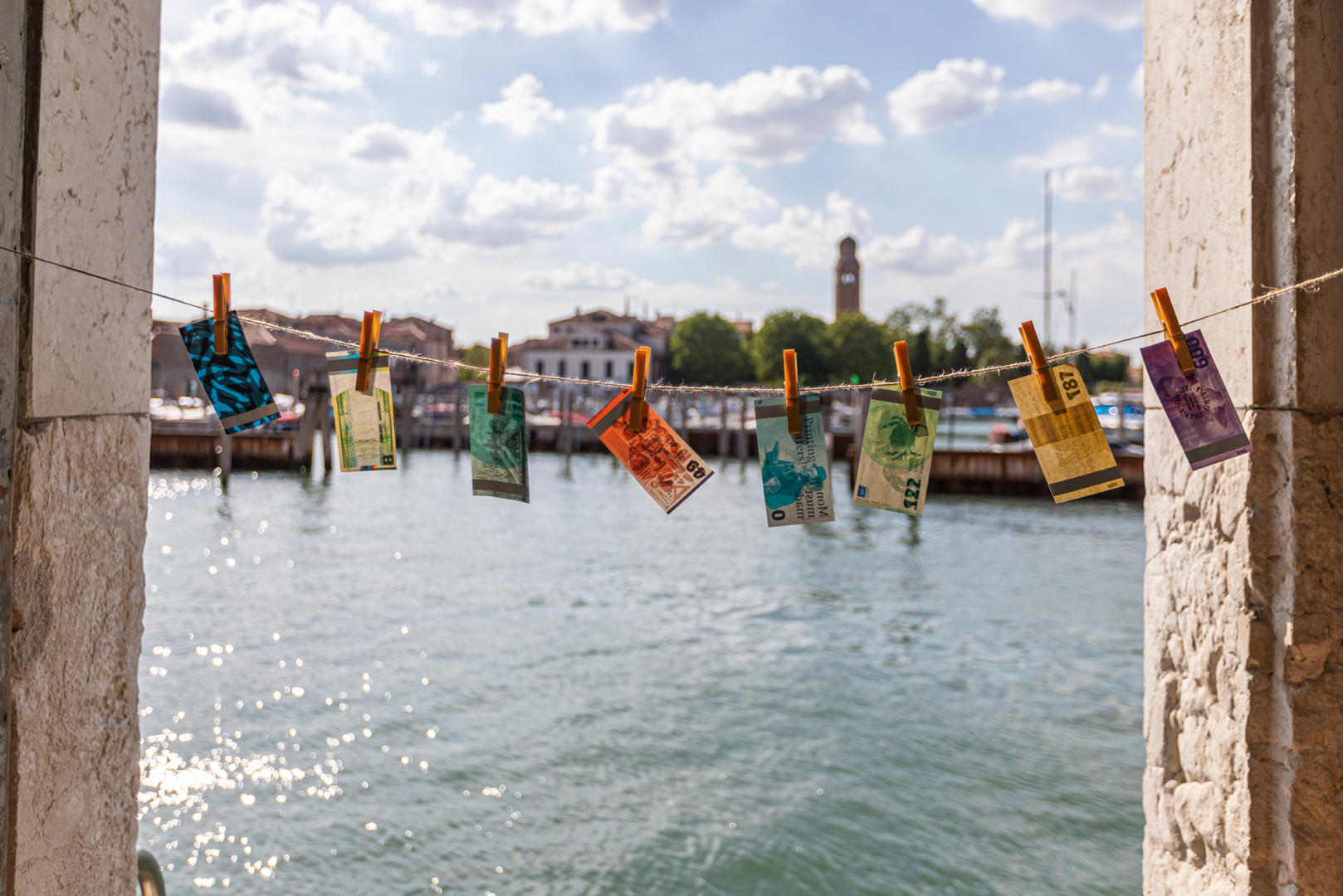
Money Must Be Made. A provocation for an alternative Venice
On 2 July, about 4,000 Venetians found an envelope containing eight counterfeit banknotes in their letterbox. These had been designed by eight graphic studios in Venice – Bruno, Tomomot, Fabrizio Berger, Lorenzo Mason Studio, Sebastiano Girardi Studio, Livio Cassese, Tapiro, Fabio Mialich and Erika Froner – and printed by the only industrial print shop still active in Venice itself: Grafiche Veneziane. It was the culminating act of Money Must Be Made, a project conceived in full lockdown by the studios and by Grafiche Veneziane, an idea born as a provocation.
Eight different ‘designer banknotes’ were created and distributed to emphasise a real problem: the possibility of creating wealth and work in Venice by investing in culture. From the outset, the idea behind Money Must Be Made was to use banknotes in their original conception, as an instrument or medium of exchange. The aim was to use money as a means of attracting public attention to the presence in the city of a community of workers active for the most part in the world of graphic design and publishing, capable of creating high-quality work much appreciated in Italy and abroad, but too often not adequately known or valued even within the restricted scope of Venice itself.
Venice – and this is the message that was being sent out – is also a dynamic community capable of attracting investments even outside the tourism sector; a network of people and business activities that has been able to build a national and international reputation over the years and that wants to continue to believe in Venice for its future in terms of profession and living. The lucky recipients of the banknotes were then invited to visit the project’s website and to sign the letter/manifesto explaining the reasons and objectives of the initiative.
Several weeks after the delivery of the envelopes it is time, as the saying goes, to take stock. We have received wide-ranging consensus to our initiative, with close to a thousand signatures and the banknotes being requested from all over Italy. It has been a great show of affection and closeness for all of us and helped cheer us up during a particularly difficult period for those working in the cultural industry. Yet many of the questions raised by our provocation still remain open. The crisis following the Covid-19 epidemic has in fact exposed the stunning short-sightedness of a management of the city’s economy based exclusively on tourism monoculture.
With extraordinary effectiveness, one of the eight banknotes shows how Venice has experienced its relationship with tourism to date. The tourist is like the cormorant portrayed on the back of the banknote intent on drying on a bricola. On the one hand it is one of the protected species of the Lagoon, and on the other it is a bird that every day has to devour large quantities of fish, thus contributing to the destruction of the ecosystem in which it lives. In a completely analogous fashion, Venice’s economy seems to need precisely that sort of tourism that is breaking the social fabric of the city in order to survive. The tragedy of Covid has broken this vicious circle, perhaps providing the space for the first time in many years to think about an alternative model for growth. It is now a fundamental necessity and a task that can no longer be postponed.
Our project aims to be an initial invitation to look at all that is already good and being produced in the city, to think of Venice as a creative workshop open to the outside, to the world beyond the bridge, still capable of attracting resources and creating jobs for new residents and future citizens.
